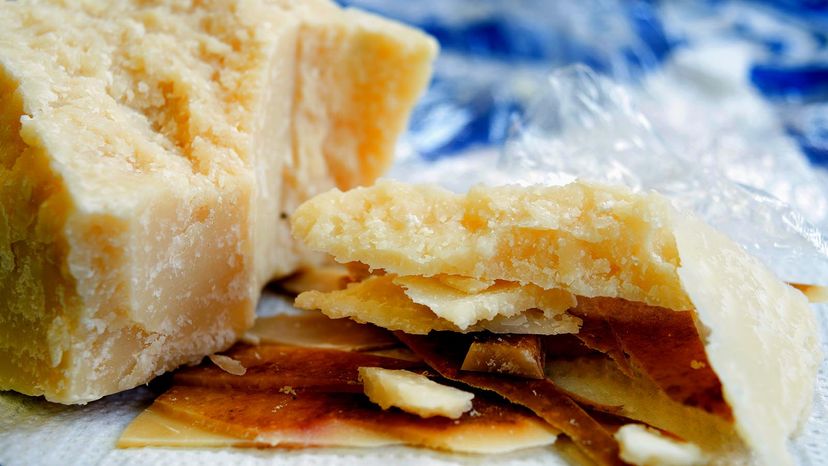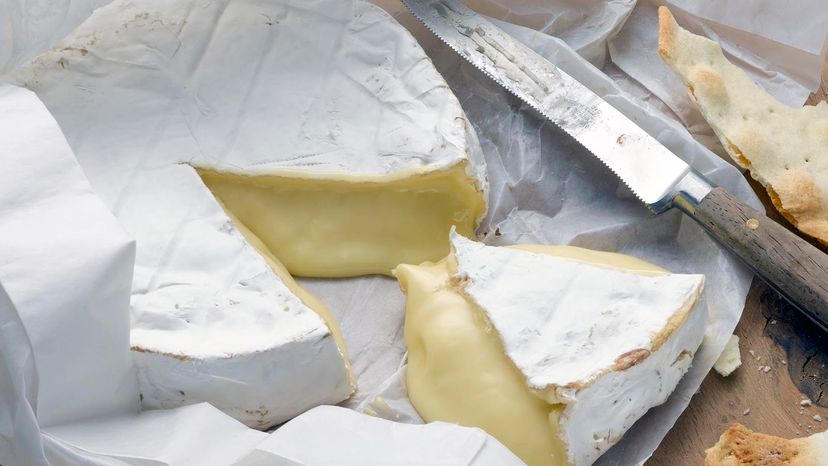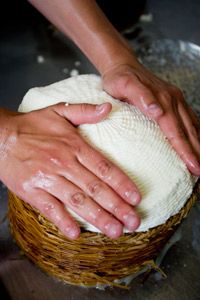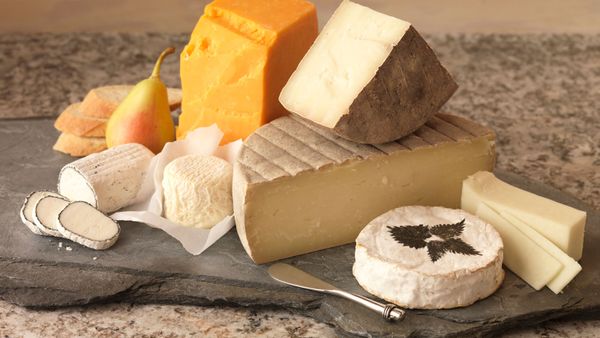
If you don't eat the rind, you're going about cheese all wrong. At least, that's what Emma Young, U.K. cheesemonger, wholesaler and blogger tells her readers. Cheesemakers craft their recipes with the final product in mind — rind and all. Young says tossing the rind is like ordering carbonara then removing every strand of tagliatelle.
"The rind accounts for a large percentage of the cheese itself, and if it's edible, it should definitely be eaten, even if it isn't eaten in exactly the same context as the cheese itself," Young says via email.
Advertisement
While rinds are formed naturally through the cheesemaking process, they're not all created equally. Some, like the hard rind on Parmesan cheese, are better used for cooking since the firmness could nearly break a tooth. Gouda lovers shouldn't eat the wax covering, but Dutch cheesemaker and consultant Mewis Hettinga says the rind is fair game to eat — although it's best to remove about half a centimeter of the rind first.
Gouda and Parmesan may be delicious, but they hardly scratch the surface when it comes to cheese varieties and rind options. So which cheese rinds should you eat? And what are the best ways to use others? We tapped into Young's decade of cheese experience to find out.
Advertisement



